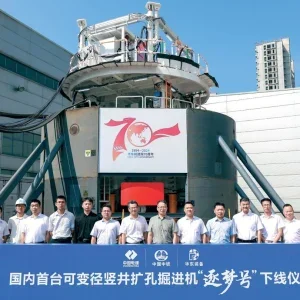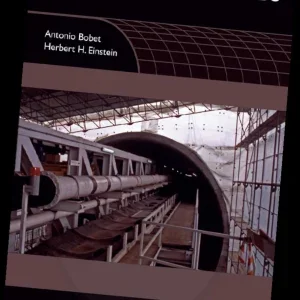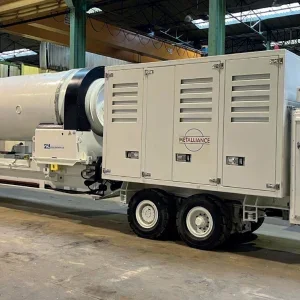Low, steep mountains covered in brown spiky trees pimple the landscape surrounding Gyeongju City in South Korea. In the far south east of the country, some 370km away from the capital, Seoul, Gyeongju was the ancient capital of the Kingdom of Silla, which ruled around two thirds of the peninsula from the seventh to ninth century.
The heritage site sits halfway between the major port cities of Pohang to the north, and Ulsan to the south. The under-construction Pohang – Ulsan Expressway will link these two economic centres of the southeast of South Korea. The whole project will require some 60km of tunnels.
South Korean contractor Samho was founded in 1976 and has 20 to 30 tunnelling projects under its belt, with half a dozen ongoing. One that it is currently working on is division seven of the Pohang to Ulsan expressway. Samho is executing works client Korea Expressway Corporation.
All 7.5km of the division is in twin tunnels and the site is located 137m above sea level on Tohamsan (literally: Mount Toham).
Geology, Drilling and Blasting
There are five divisions in Korean geologic thinking. Rock runs from ‘very good ‘with a rating of one, down to five for ‘very poor’. The rock in this project runs across three types and is mainly heavily fractured granite including shale. It is a highly complex environment.
The face is 14.16m wide and 9.17m high, with another 12m apart. A 118 hole drill pattern has been used and blasting is performed seven times per day. Blasting throughout the night is made possible by to the remote location of the project site.
With a drop in rock quality from Korean rating three (around 1-10 according to the Q Index) to five (less than 0.1), a top heading and benching approach has been adopted.
Because of the fractures, and following a tunnel roof collapse in June, a reduced drilling depth has been put in place after umbrella grouting. Another potential issue is a fast penetration rate into softer rock.
The RD525 drifter can penetrate faster than the Axera in hard rock with a high accuracy, hence the mentioned rate improvements (see box, p.26). If the drill speeds up in softer rock, accuracy is lost and there is the possibility of overbreak and underbreak. The RD525 drill was designed to be able to recognise the rock formation, and then it is able to reduce speed automatically to compensate for this effect.
The maximum depth of 3.8m had been executed twice on the project as Tunnels visited, while normal rounds consisted of depths of two to 2.5m.
Lining
The sprayed concrete lining was installed by a Samho subsidiary and was designed to cope with 1,800t of water per day. Wet shotcrete was used for a double shell lining and applied by a Samho subsidiary. Concrete was batched on site.
Rockbolting
The resin rockbolts used are 32mm in diameter and 4m long and are manufactured by a local Korean company. Placement is 1.5m apart in more competent rock, and 2m apart in less. The original design was to use some 20,600, but now every round is bolted due to the instability of the rock.
Landscaping
Rock excavated is used for construction, and the site claims 100 per cent of material is recycled. Tohamsan is in a protected national park area, and is under-developed for this reason.
As a result, even supplying the site with 40t trucks has resulted in complications.
Just down the road from the site, a bridge has had to be completely strengthened by Samho from its original 30t capacity.
All such works have had to be permanent improvements.
All about data
"One of the biggest challenges we are facing on this project, and one that we are trying to improve on across all of our tunnelling activities, is data," says Young Sam Kim, Samho site manager. "At the moment we do not have much data on tunnelling conditions, and everything depends on the experience of our engineers, which we hope to change."
Young adds that there is now a focus to increase our datalogging activities, and build up a database for use on future tunnelling projects. And it’s not just conditions that are missing from spreadsheets.
An idea of tool consumption and timescale will of course be crucial for accurate costing, and future tendering activities in Korea. "And elsewhere, of course," he adds. "We have no tunnelling experience outside of Korea yet, but we are eager to expand abroad"






